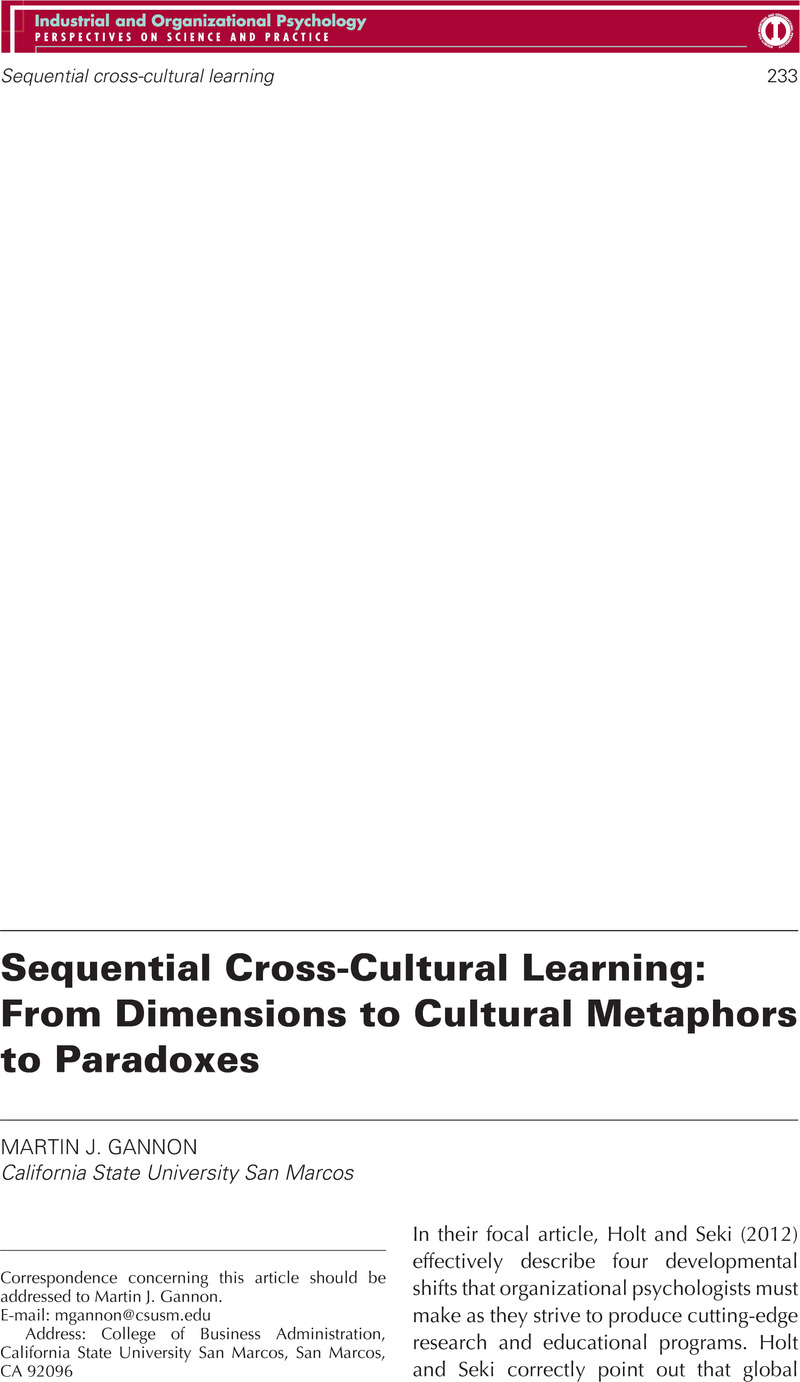Crossref Citations
This article has been cited by the following publications. This list is generated based on data provided by Crossref.
Seki, Kyoko
and
Holt, Katherine
2012.
Global Leadership to Transform the World.
Industrial and Organizational Psychology,
Vol. 5,
Issue. 2,
p.
248.
Bravo, Rafael
de Chernatony, Leslie
Matute, Jorge
and
Pina, José M
2013.
Projecting banks’ identities through corporate websites: A comparative analysis of Spain and the United Kingdom.
Journal of Brand Management,
Vol. 20,
Issue. 7,
p.
533.
Glazer, Sharon
Moliner, Carolina
and
Carmona, Carmen
2014.
Internationalizing the Curriculum in Organizational Psychology.
p.
79.
Gannon, Martin J.
and
Deb, Palash
2018.
Advances in Culturally-Aware Intelligent Systems and in Cross-Cultural Psychological Studies.
Vol. 134,
Issue. ,
p.
313.
Fatehi, Kamal
Priestley, Jennifer L
and
Taasoobshirazi, Gita
2020.
The expanded view of individualism and collectivism: One, two, or four dimensions?.
International Journal of Cross Cultural Management,
Vol. 20,
Issue. 1,
p.
7.





